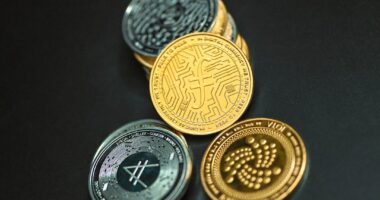Recently, the art & digital collectibles market has seen a massive surge in the use of non-fungible tokens (NFTs). NFTs are distinct digital assets that can be verified and are rare because they are kept on a blockchain. NFTs have become extremely popular as a result of their distinctiveness drawing the attention of investors, collectors, and artists alike. An essential part of the NFT ecosystem is the NFT marketplace. These online marketplaces give artists a place to display and market their digital works, and buyers and investors can peruse and buy these one-of-a-kind items. The buying and selling of NFTs is made easier by NFT marketplaces, which also guarantee the security and legitimacy of these digital assets.
Key Takeaways
- NFT marketplaces are digital platforms where users can buy, sell, and trade unique digital assets.
- Building an NFT marketplace requires understanding the NFT ecosystem, choosing the right blockchain, and implementing smart contracts and payment systems.
- A user-friendly interface is crucial for attracting and retaining users on your NFT marketplace.
- Promoting your NFT marketplace through marketing strategies and partnerships with NFT artists can help grow your community.
- Keeping your community engaged through a newsletter and social media presence can help showcase rising NFT artists and drive sales on your marketplace.
Understanding the various participants in the NFT ecosystem is crucial to appreciating the importance of NFT marketplaces. The creators & miners of digital artworks, known as NFTs, are the central players in this ecosystem. Traditional painters who are experimenting with digital media can be found among these artists, as can digital artists who have made the NFT space their main medium. An additional important part of the NFT ecosystem are collectors and investors. For a variety of reasons, such as the chance to directly support artists, the possibility of making money, and the chance to acquire exclusive digital assets, these people are drawn to NFTs.
In order to find and purchase NFTs that fit their investment goals and interests, collectors and investors peruse NFT marketplaces. NFT marketplaces exist in a variety of formats, each with special attributes. OpenSea, Rarible, & SuperRare are a few of the most well-known NFT marketplaces.
The kinds of NFTs supported, the fees levied, and the degree of curation offered by these platforms vary. The market that best suits their requirements and tastes is frequently selected by artists, investors, and collectors. Creating your own platform can be a fruitful venture if you’re interested in joining the NFT marketplace. To create an NFT marketplace, though, you must be aware of the technical specifications & factors.
| Step | Description | Metric |
|---|---|---|
| 1 | Choose a blockchain platform | Number of available blockchain platforms |
| 2 | Design the user interface | Number of user interface design iterations |
| 3 | Develop smart contracts | Number of smart contracts developed |
| 4 | Integrate payment gateway | Number of payment gateway integrations |
| 5 | Test the marketplace | Number of bugs found and fixed |
| 6 | Launch the marketplace | Number of users on the first day of launch |
The first step is to choose between using pre-existing platforms or creating your own NFT marketplace from the ground up. Your marketplace’s features and functionalities are entirely under your control when you build it from scratch, but doing so calls for a large investment of time and money in technical know-how. Nevertheless, there can be less customization options if you choose to launch your marketplace using pre-existing platforms like OpenSea or Rarible.
This can be a quicker and easier process. Selecting the appropriate blockchain to house your NFTs is one of the most important choices you will have to make when developing an NFT marketplace. Right now, Ethereum is the most widely used blockchain for NFTs, providing developers with a wealth of tools and resources in addition to a strong infrastructure. However, other blockchains like Flow and Binance Smart Chain have emerged as a result of Ethereum’s scalability problems and high gas fees.
For NFT marketplaces, each blockchain has advantages and disadvantages. Though the high fees may put off smaller artists and collectors, Ethereum’s well-established ecosystem and sizable user base make it an appealing option. Although Binance Smart Chain has faster transaction times and lower fees than Ethereum, it might not have as much decentralization or security. With its emphasis on scalability and user experience, Dapper Labs’ Flow is a great option for marketplaces with high transaction volumes.
The effectiveness of an NFT marketplace is greatly dependent on the user experience. It’s critical to put simplicity, intuitiveness, and aesthetics first when designing your platform. Artists, collectors, and investors will be drawn to your marketplace and encouraged to participate if it has a clear and easy-to-use interface. Think about adding functions like simple search capabilities, unambiguous NFT classification, & easy navigation. Giving users the option to filter & arrange NFTs according to different standards can improve their browsing experience.
Incorporating social features into your marketplace, such as user profiles, comments, and likes, can also encourage community building and engagement. Because smart contracts guarantee transaction security and transparency, they are a crucial component of NFT marketplaces. Self-executing contracts, or smart contracts, have the terms of the contract directly encoded into the code. They do away with the need for middlemen by automatically executing transactions when predetermined criteria are satisfied. To manage the minting, listing, and selling of NFTs, you must incorporate smart contracts into the design of your NFT marketplace.
Developers may create and implement smart contracts with ease thanks to the robust infrastructure offered by platforms like Ethereum. To guarantee the security and dependability of your smart contracts, it is imperative that you test and audit them thoroughly. Another essential component of NFT marketplaces is their payment systems. NFT transactions have historically been primarily paid for with cryptocurrencies like Ethereum or Bitcoin.
To increase the accessibility of NFTs to a wider audience, some marketplaces are investigating the incorporation of fiat currencies. You can draw in more users and boost the liquidity of your marketplace by providing a variety of payment options. In order to draw in artists, collectors, and investors, it is crucial to properly market your NFT marketplace after it has been constructed. Social media campaigns, influencer collaborations, content marketing, and community involvement are a few examples of marketing techniques for NFT marketplaces. NFT marketplaces are frequently promoted through social media sites like Instagram, Discord, and Twitter.
Buzz-building strategies to draw users to your platform include showcasing featured artists, producing interesting content, and holding giveaways. Working together with significant players in the NFT market, like collectors or artists, can also help build credibility and visibility. Writing blog entries or making instructional videos are examples of content marketing that can position your marketplace as a reliable source of knowledge. Those who are new to the area and seeking advice may be drawn in by offering educational materials and insights into the NFT ecosystem. An NFT marketplace’s long-term viability depends on community development and engagement.
Organizing community gatherings, welcoming user input, & cultivating a feeling of community can build a devoted user base and promote organic growth. Users can remain informed and involved in your marketplace by receiving updates from you on a regular basis via social media and newsletters. Throughout the ecosystem, NFT marketplaces provide artists with a variety of employment options. Through these platforms, artists can mint and sell their digital works of art directly to consumers, cutting out the traditional middlemen like galleries or agents.
Artists can keep more control over their creations and possibly make more money with this direct-to-consumer business model. Also, partnerships and collaborations are another common way that NFT marketplaces work with artists. These collaborations may involve curated collections, limited editions, or exclusive drops. Artists can benefit from the platform’s marketing and promotional efforts as well as increased exposure to a larger audience by collaborating with NFT marketplaces. The NFT ecosystem places a high value on supporting up-and-coming musicians. NFT marketplaces have a big impact on promoting and exhibiting up-and-coming talent.
Marketplaces can provide up-and-coming artists visibility & a chance to network with investors & collectors by showcasing and curating their collections. Give some thought to adding features to your marketplace that showcase and support up-and-coming artists. In addition to working with institutions of higher learning or groups that assist up-and-coming artists, this can involve creating special sections or categories just for fresh, undiscovered talent. You may help the NFT ecosystem expand and become more diverse by actively encouraging & supporting up-and-coming NFT artists.
An NFT marketplace’s ability to succeed and last depends on community involvement. You should think about starting a newsletter and being active on social media to keep your community interested. With updates on new artists, featured collections, and upcoming events, a newsletter can act as a direct line of communication between you and your users. Instructive material, artist interviews, & subscriber-only deals are also possible inclusions.
You can cultivate a sense of engagement and loyalty in your community by consistently providing them with worthwhile and pertinent content. You may engage with your community in real time by keeping an active presence on social media sites like Twitter, Instagram, and Discord. You can establish a more personal connection with your users by replying to their comments, holding live Q&A sessions, and sharing behind-the-scenes content. Social media platforms also give you a chance to talk about the NFT ecosystem, promote artists, and highlight new NFT releases.
In summary, NFT marketplaces are essential to the NFTs’ rising appeal. Through comprehension of the various entities within the NFT ecosystem, development of an intuitive user interface, integration of smart contracts and payment mechanisms, & skillful marketplace promotion, you can establish a prosperous platform that upholds artists, captivates collectors, & enriches the lively NFT community.
Looking to create your own NFT marketplace? Check out this informative article on NFT-Jobs.com that provides a step-by-step guide on how to create an NFT marketplace. From understanding the basics of NFTs to setting up the necessary infrastructure, this article covers everything you need to know. Whether you’re a beginner or an experienced developer, this comprehensive guide will help you navigate the world of NFT marketplaces. Don’t miss out on this valuable resource! Read more
FAQs
What is an NFT marketplace?
An NFT marketplace is a platform where users can buy, sell, and trade non-fungible tokens (NFTs). NFTs are unique digital assets that are stored on a blockchain and can represent anything from art to music to virtual real estate.
Why create an NFT marketplace?
Creating an NFT marketplace can be a lucrative business opportunity as the demand for NFTs continues to grow. It also provides a platform for artists and creators to showcase and sell their digital creations.
What are the steps to create an NFT marketplace?
The steps to create an NFT marketplace include:
1. Choosing a blockchain platform
2. Developing a smart contract
3. Building a user interface
4. Integrating a payment gateway
5. Launching and marketing the marketplace.
What blockchain platforms can be used for an NFT marketplace?
Popular blockchain platforms for NFT marketplaces include Ethereum, Binance Smart Chain, and Flow.
What is a smart contract?
A smart contract is a self-executing contract with the terms of the agreement between buyer and seller being directly written into lines of code. In the case of an NFT marketplace, the smart contract would handle the creation, ownership, and transfer of NFTs.
What is a payment gateway?
A payment gateway is a service that processes online payments. In the case of an NFT marketplace, a payment gateway would allow users to purchase NFTs using cryptocurrency or fiat currency.
How can an NFT marketplace be marketed?
An NFT marketplace can be marketed through social media, influencer partnerships, and targeted advertising. It is also important to showcase the unique features and benefits of the marketplace to potential users.





